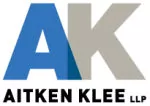In Elbit Systems Electro-optics Elop Ltd. v. Selex ES Ltd., 2016 FC 1000, the Federal Court allowed part of a motion to strike portions of a statement of claim in an action for patent infringement.
The Defendant, Selex ES Ltd, is a subcontractor to General Dynamics Mission Systems, the prime contractor on an upgrade contract for installing DIRCIM systems on Canada's fleet of Lockheed CP140 Aurora aircraft. The Plaintiff alleged that the systems to be supplied, delivered and installed by the Defendant would infringe the Plaintiff's patent, but did not name either General Dynamics or the Canadian Government as Defendants.
First, the Defendant moved to strike paragraphs relating to the allegation of "inducement to induce infringement" on the bases that this is not a recognized cause of action and, in any event, the Plaintiff had not pleaded material facts capable of supporting the allegation. The Defendant argued that the test for inducement, set out in Weatherford v. Corlac requires direct influence on a direct infringer who completes the act of infringement such that it cannot apply to indirect inducement (i.e. influencing a person who then influences a direct infringer):
[...] A determination of inducement requires the application of a three-prong test. First, the act of infringement must have been completed by the direct infringer. Second, the completion of the acts of infringement must be influenced by the acts of the alleged inducer to the point that, without the influence, direct infringement would not take place. Third, the influence must knowingly be exercised by the inducer, that is, the inducer knows that this influence will result in the completion of the act of infringement. [...]
Prothonotary Tabib disagreed and held that Weatherford does not preclude indirect inducement because (a) the case did not address such an allegation, and (b) since inducement is itself an act of infringement, the "act of infringement" referred to in Weatherford could be read as including a previously established infringement by inducement. The Court further held that it was not satisfied that there were no grounds to find inducement, and the pleading should not be struck.
The Defendant also argued that certain paragraphs should be struck as they were merely bald assertions or speculation. The first such statement was that "[i]t is also customary and ordinary practice in the defence industry that contracts (...) contain [indemnity clauses]." The Court held that the existence of an industry practice is an allegation of fact which, in this case, was relevant to the allegation that the Defendants did in fact provide an indemnity. The second impugned statement was that "at all material times, [the Defendant] has been aware of the '754 Patent". The Court found that this ought to be particularized pursuant to Rule 181, however, declined to exercise its discretion to strike because the use of partial motions to strike should not be encouraged where the defect is amenable to being cured by an informal request for particulars.
Finally, the Defendants sought to strike paragraphs referring to a different procurement process from a foreign military which the Canadian Government allegedly considered against General Dynamics' allegedly infringing bid. The Court found that the parallel process was not in any way material to the cause of action alleged against the Defendant. While Courts are generally reluctant to strike paragraphs that are mere "surplus", the impugned paragraphs were not facts to which the Plaintiff was privy and the Court rejected the Plaintiff's argument that it might shed light on inducement allegations as it would help understand why the government preferred General Dynamics' bid to that from foreign military, characterizing the latter as pure speculation. The Court held that the Defendant should not be put through onerous task of dealing with allegations and the associated discovery when the statements were plainly irrelevant and immaterial, and struck the impugned paragraphs from the Plaintiff's claim.
A copy of the judgment can be found here.
The content of this article is intended to provide a general guide to the subject matter. Specialist advice should be sought about your specific circumstances.

